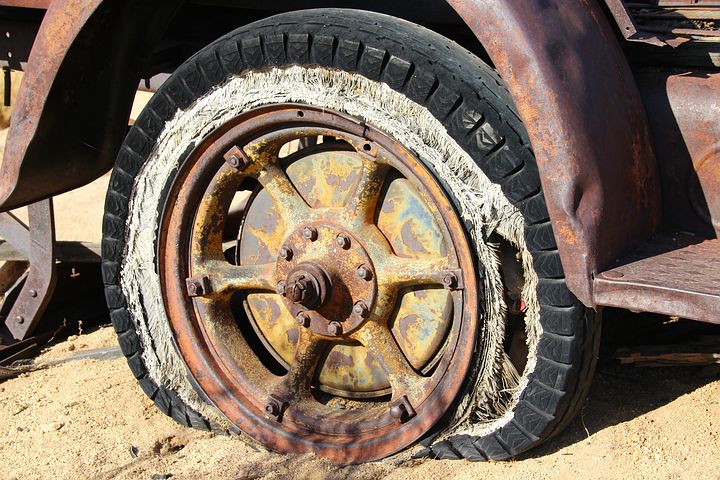 Tire companies don’t have the best reputation. They use plants that heavily rely on fossil fuels. They’re constantly facing fines for being the biggest violators of air pollution regulations across all nations. Even their materials tend to stay in junkyards forever without breaking down well, reliant upon materials that are harmful to the environment. In fact, around 300 million tires are discarded annually in the United States alone.
Tire companies don’t have the best reputation. They use plants that heavily rely on fossil fuels. They’re constantly facing fines for being the biggest violators of air pollution regulations across all nations. Even their materials tend to stay in junkyards forever without breaking down well, reliant upon materials that are harmful to the environment. In fact, around 300 million tires are discarded annually in the United States alone.
More and more countries are cracking down on tire companies and forcing them to change their supply chains to conform to more environmentally friendly processes. Companies, like Giti Tire Group, have been at the forefront of the new wave of tire manufacturing, dominating the global market with innovative products.
China and Europe have completely reinvented the tire industry to be much more sustainable. Here’s how companies can follow their example and move to more environmentally responsible, green technologies that combat the growing air pollution issues.
Extreme Regulations
The biggest factor in combating air pollution has been strict regulations. China has recently followed suit with the United States and Europe when it comes to Clean Air regulation. Putting an increased focus on the overall health of citizens over the unbridled free enterprise of capitalism has been an increasing trend as air quality continually decreases due to pollution, the majority of which comes from automobiles and manufacturing.
Regulations have been enacted restricting the amount of air pollution allowed in the manufacturing process, the amount of wasteful materials used in manufacturing tires, and how tires need to contribute to sustainable vehicles. While these regulations initially created a massive downturn in the manufacturing business, eventually the innovation required to stay afloat led to a renewed growth in green tire manufacturers over older, less eco-friendly methods of manufacturing.
Nitrogen
One easy step that more and more consumers are taking is the use of nitrogen to fill tires. Because nitrogen molecules are larger, they don’t leak out of tires nearly as rapidly. The fully inflated tires help fuel economy and reduce the need for constantly reproducing replacement tires. Nitrogen also lacks the moisture that oxygen contains. This means that the tires will not rust, corrode, or rot as quickly, meaning that the tires will see an increased life expectancy.
Clean Energy
The manufacturing process itself has begun to rely less on fossil fuels and more on clean energy to power plants. Many tire manufacturers have switched to wind turbines, hydroelectric power, and solar power to ensure a green manufacturing process. There are also locally sourced alternative energies that can be used in combination to reduce waste.
Recyclable Materials
At the end of their life, most tires go to waste in junkyards. Several manufacturing companies have endeavored to reduce this by backing recycling programs and using recyclable materials. These newer, greener materials can be used to create sports fields, playground turf, soundproof buildings and studios, and more. The best programs reuse 100% of the materials from the tires, leaving absolutely no waste.
Each individual tire tends to use somewhere between 5 to 10 gallons of petroleum oil. The industry really needs to cut back on this wasteful use of a finite resource, and several companies have made great headway over the last decade.
One of the ways to do this is using sustainable and plant based materials. In lieu of the petroleum, a lot of companies have begun using sunflower and corn oils in their process. Floral latex products can also reduce dependency upon rubber. Orange oil has become increasingly popular.
Reforestation
One of the ways air pollution is reduced and clean air is created is with trees. They take in carbon dioxide and produce oxygen. Tire manufacturers use a lot of rubber trees in their production. This deforestation removes these natural purifiers and creates more smog. Many companies have begun getting involved in reforestation efforts. They conduct agricultural research in the rubber tree forests and plant more trees than they cut down in their manufacturing process. This ensures long-term sustainability of these natural forests and reduces the environmental impact the tire industry creates.
Rolling Resistance
Friction is a huge part of how cars work. When tires roll, they create friction with the ground. This can be useful in bad weather, helping cars to stay under your control during flash floods and ice patches, but for most of the year, it only serves to make your engine work harder.
Creating tires with a reduced rolling resistance improves the fuel efficiency of cars, reducing the emissions rates significantly while also increasing fuel efficiency.
A lot of manufacturers have begun using Silica in their tires instead of rubber. This reduces deforestation by requiring fewer rubber trees in production. Silica also reduces the rolling resistance of tires.
Consumer Conscientiousness
There are also ways that consumers can help partner with manufacturers to create a green tire industry. Here are some of the ways you can help.
Maintain your tire pressure. Tires without enough pressure have increased rolling resistance, which means your engine is working harder and thereby producing more emissions and not maintaining fuel efficiency. Fill your tires with nitrogen as soon as your car indicates they’re low and regularly check the PSI to ensure maximum efficiency.
Avoid city streets. The highways are the most fuel-efficient way to travel. With less obstacles and stops to worry about, your engine doesn’t have to constantly burn extra fuel to restart from a stopped point.
Avoid traffic. This one will reduce your stress levels. It also helps the environment. Traffic jams will put a lot of stress on your car’s engine and completely eliminate any fuel efficiency. Take alternative routes whenever possible, or ty to adjust your schedule around major congestions.
Turn your car off when you’re not driving. A lot of us like to idle when we’re waiting. If you’re picking someone up and they’re still inside, or going shopping with someone but want to wait in the car, don’t run your engine. It burns a lot of extra fuel and is constantly emitting pollution into the air and there’s no reason for it. Go inside with them when they shop and just wait on a bench or chair somewhere instead. Turn the engine off and roll down the windows for the few short minutes it will take for them to get ready and meet you outside.
Conclusion
The tire industry has made some great moves towards reducing their carbon footprint. Thanks to stricter regulations across the globe, they have been forced to innovate if they want to remain in business.





Leave a Comment